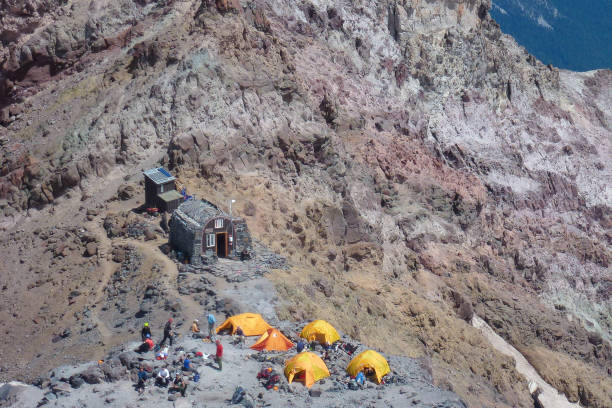
The Shira Route is one of the least trafficked routes on Kilimanjaro, offering a more serene experience for trekkers. It starts from the Londorossi Gate and ascends the beautiful Shira Plateau, a volcanic caldera that’s often overlooked by climbers. This route offers stunning views of the plateau and surrounding wilderness, with the benefit of early high-altitude trekking, which is excellent for acclimatization. The Shira Route is ideal for those seeking a quieter, more scenic experience with fewer crowds.
This 7-day itinerary allows for proper acclimatization and provides a balance of adventure and comfort.
$ 000/
The Machame Route is one of the most popular Kilimanjaro routes, offering beautiful views and a good balance of challenge and acclimatization. It’s known for its diverse landscapes, from lush rainforests to alpine deserts, culminating in the stunning summit of Uhuru Peak.
$000
The Marangu Route is the shortest and most straightforward route, making it a popular choice for first-time climbers. This is the only route that offers hut accommodations, meaning you don’t have to sleep in tents — perfect for those looking for a more comfortable trek.
$000
The Lemosho Route is a more remote and scenic route, perfect for trekkers who enjoy a quieter experience with stunning views. It’s a longer route, which means better acclimatization and a higher success rate. With fewer climbers and more natural beauty, it’s a truly unforgettable experience.
There are several routes, each with different characteristics. The Machame Route is the most popular and scenic, while the Marangu Route is the easiest and only one with hut accommodation. For a quieter climb, consider the Rongai Route. For experienced trekkers, Umbwe Route offers a more challenging ascent
There are several routes, each with different characteristics. The Machame Route is the most popular and scenic, while the Marangu Route is the easiest and only one with hut accommodation. For a quieter climb, consider the Rongai Route. For experienced trekkers, Umbwe Route offers a more challenging ascent
The typical duration is 5 to 9 days, depending on the route. The longer the climb, the better the chances of acclimatization and a successful summit.
Climbing Kilimanjaro requires physical stamina and mental preparation. While it’s not a technical climb, it can be challenging due to the high altitude. We recommend a moderate level of fitness and commitment. The difficulty varies depending on the route and how well you acclimatize.
No, you do not need technical climbing skills. However, the trek requires good physical fitness and the ability to handle altitude. If you’re a beginner, routes like Marangu or Rongai may be more suitable.
Depending on the route, you will either camp in tents or stay in mountain huts. The Marangu Route offers huts, while other routes like Machame, Lemosho, and Rongai require camping with tents.
Mount Kilimanjaro stands at 5,895 meters (19,341 feet) above sea level, making it the highest mountain in Africa and one of the highest free-standing mountains in the world.
Mount Kilimanjaro stands at 5,895 meters (19,341 feet) above sea level, making it the highest mountain in Africa and one of the highest free-standing mountains in the world.
Essential items include:
Warm clothes (even in the tropics, temperatures can drop below freezing)
Waterproof gear (jackets, pants)
Climbing boots
Sleeping bags
Sunscreen
Headlamp/flashlight
Daypack
Personal items like toiletries and medication
We will provide a detailed gear list to help you pack efficiently.
The summit success rate ranges from 60% to 90%, depending on the route, acclimatization, and physical preparedness. Routes like Lemosho and Machame tend to have higher success rates due to better acclimatization schedules.
We provide transfers from Moshi or Arusha to the starting gate of the trek. Our team will ensure smooth transport from your hotel to the departure point.

Lujoma Expeditions is a locally owned Tanzanian tour company specializing in custom safaris, cultural experiences, mountain treks, and beach holidays across East Africa.
© 2025 Lujoma Expeditions. All Rights Reserved. | Privacy Policy | Terms & Conditions
WhatsApp us